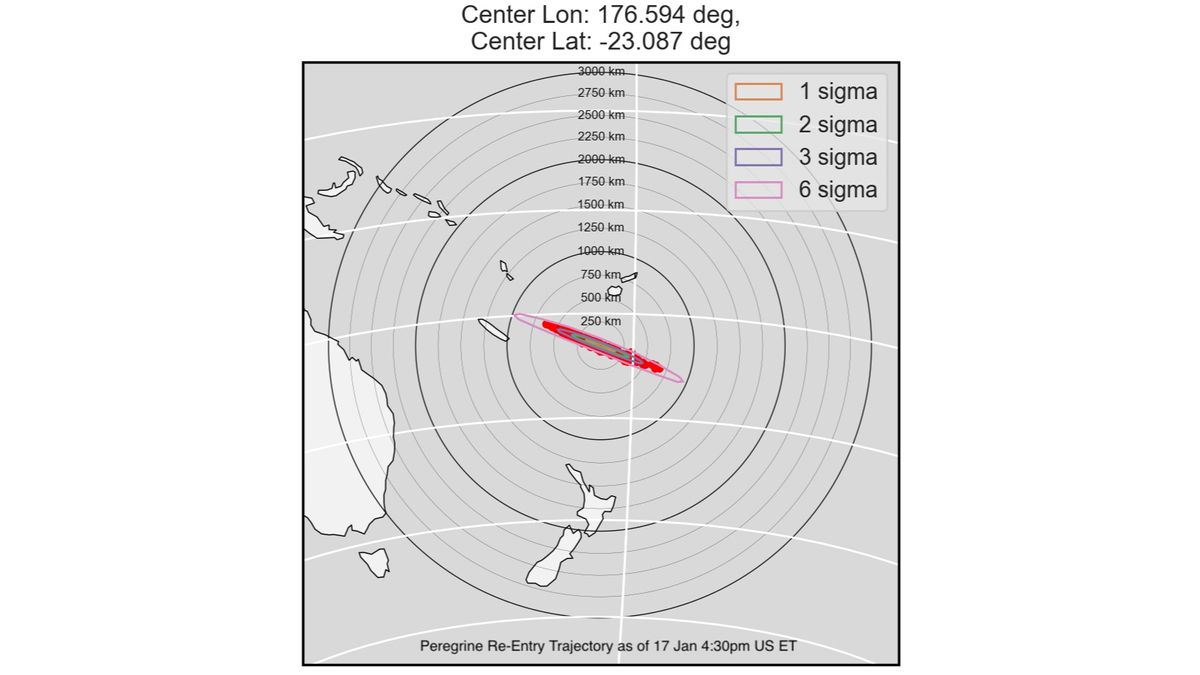The long journey of the Peregrine lunar lander is about to end, returning to its home planet.
Peregrine will likely collide with Earth's atmosphere over the South Pacific Ocean today (January 18) at around 4 p.m. EDT (2100 GMT), according to Astrobotic, the Pittsburgh-based company that built it.
“Astrobotic positioned the Peregrine spacecraft for a safe and controlled return to Earth over a remote region of the South Pacific Ocean,” the company wrote in a statement. Updated Wednesday evening (January 17).
“The team was constantly monitoring our reentry analysis with NASA,” Astrobotic added, noting that such work had not revealed “any anticipated risks.”
Related: The failure of the Peregrine lunar lander will not stop NASA's ambitious commercial lunar program
Peregrine launched Jan. 8 on the first-ever mission of Vulcan Centaur, United Launch Alliance's powerful new rocket.
The lander carries 20 payloads for a variety of customers, including NASA, which has placed five science experiments on board through the Commercial Lunar Payload Services program. The lander also carries human remains, in the form of trophy payloads featured by Celestis and Elysium Space.
Peregrine had aimed to deliver this equipment to the lunar surface next month, but that plan was foiled by a fuel leak that occurred shortly after liftoff. Lander handlers attributed the problem to a ruptured oxidizer tank, which may have been caused by a stuck valve.
Despite the thrust anomaly, Peregrine remains operational. The lander recently traveled a long distance along the Moon, then began returning on a collision course with Earth. Astrobotic, in collaboration with NASA, has developed a plan to make the upcoming impact as safe as possible.
The Peregrine team took two key steps to put Peregrine on the best possible crash path, Astrobotic wrote in an update Wednesday evening. First, they performed a series of 23 small burns on the vehicle's main engines. (The fuel leak made a long-term burn impossible.)
“Second, we repositioned the spacecraft so that the force from the propellant leak turned us toward the South Pacific Ocean,” Astrobotic wrote.
They added, “The measures implemented by the team were aimed at reducing the risk of debris reaching the ground.” “Astrobotic continues to work closely with NASA and other relevant government authorities to keep everyone informed and to solicit feedback as appropriate.”
We should hear more about Peregrine's death soon, and not just via an update on Astrobotic's website. The company plans to host a media conference on Friday (January 19) at 1 p.m. EDT (1800 GMT) to discuss Peregrine's mission and fate.

“Typical beer advocate. Future teen idol. Unapologetic tv practitioner. Music trailblazer.”







More Stories
Boeing May Not Be Able to Operate Starliner Before Space Station Is Destroyed
How did black holes get so big and so fast? The answer lies in the darkness
UNC student to become youngest woman to cross space on Blue Origin